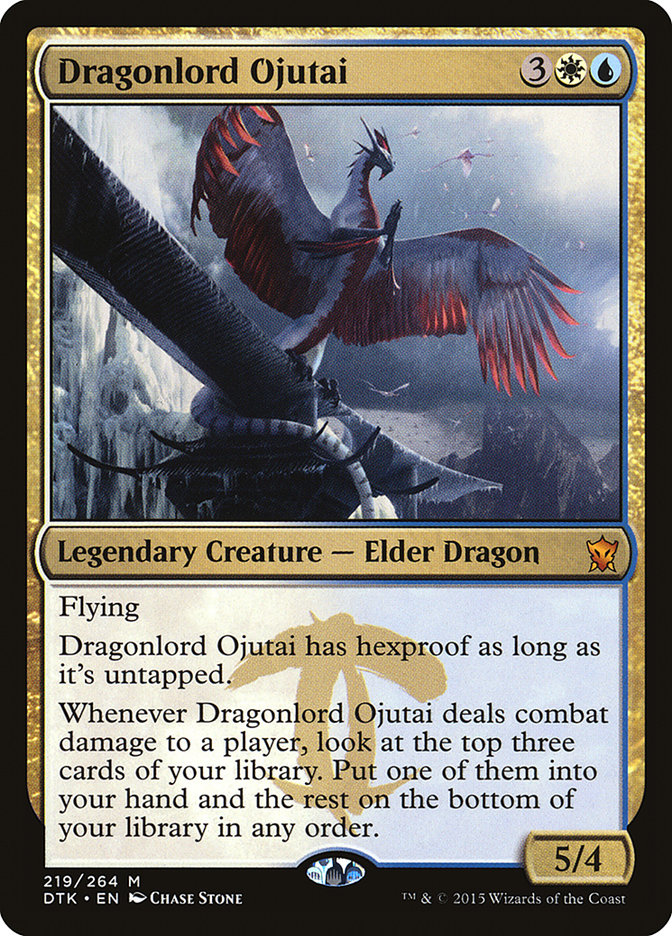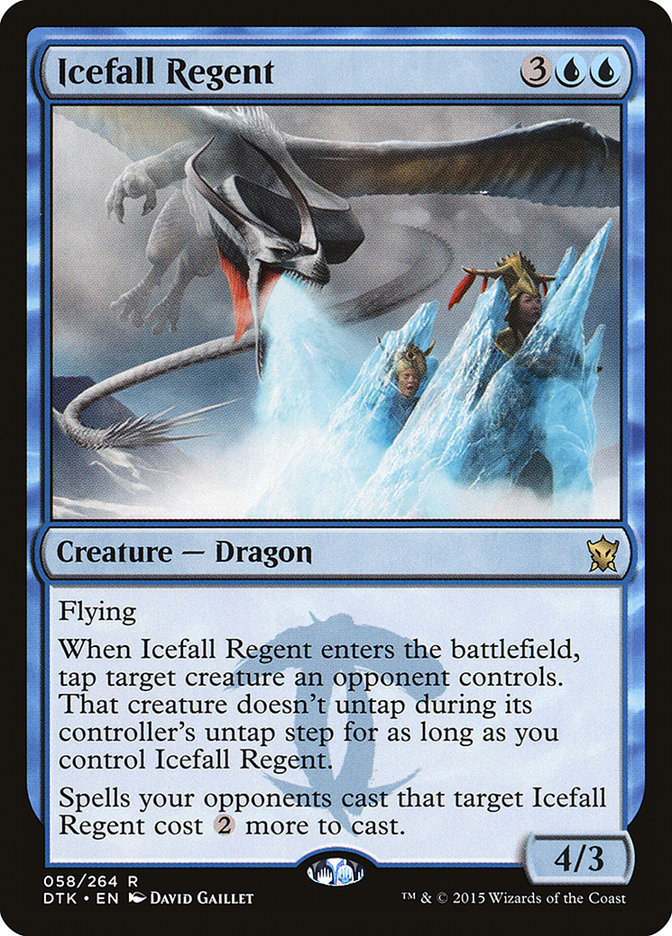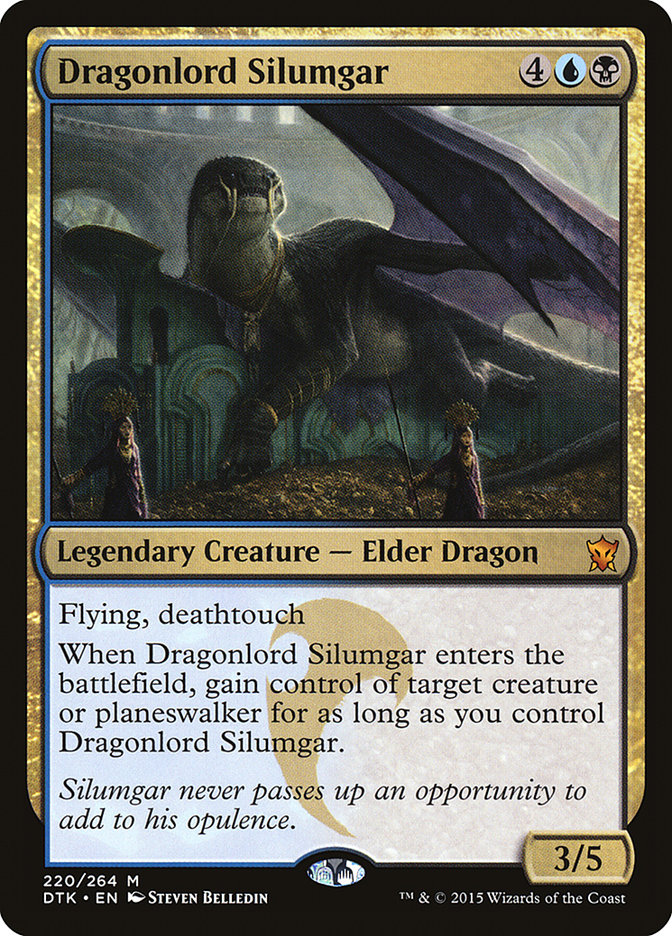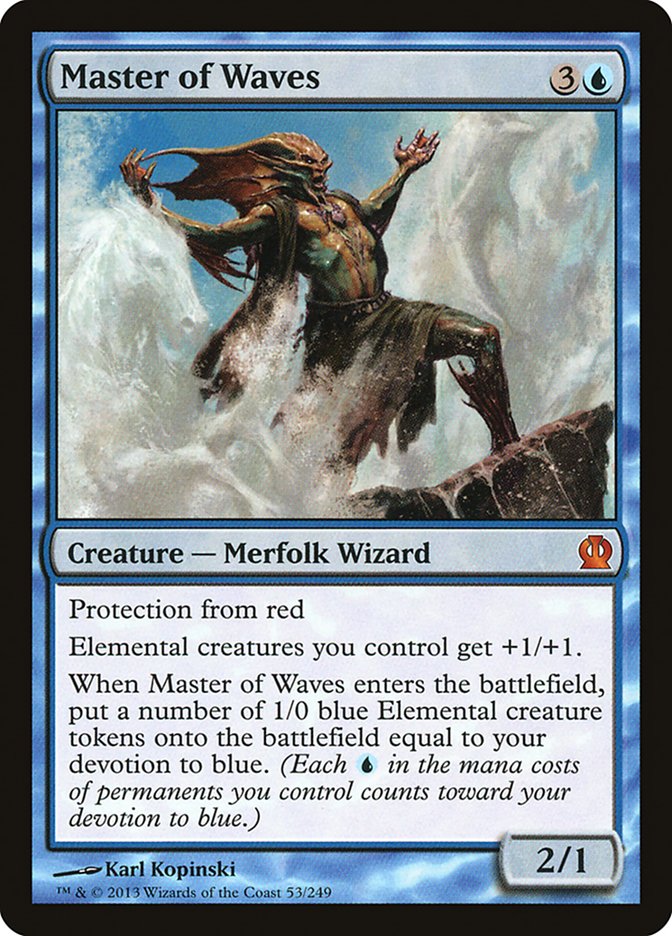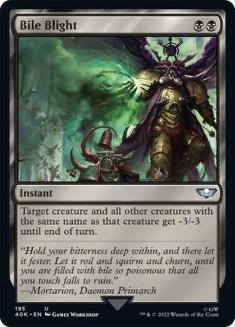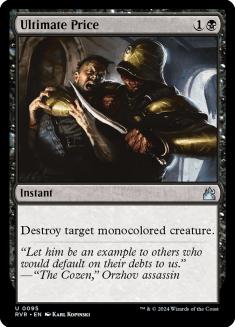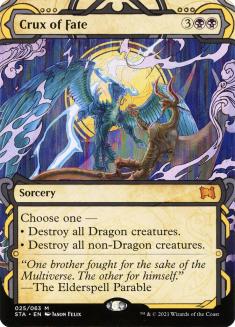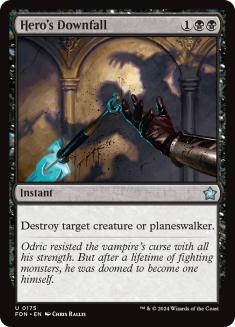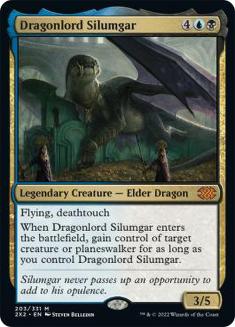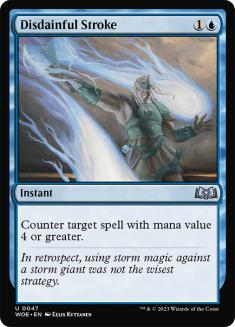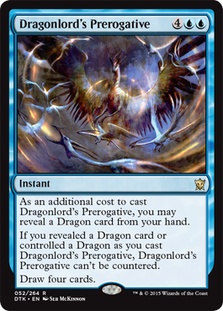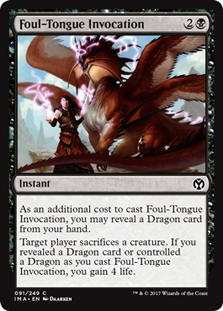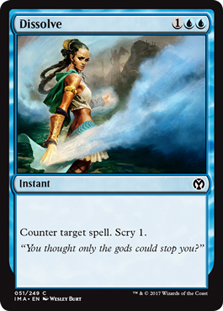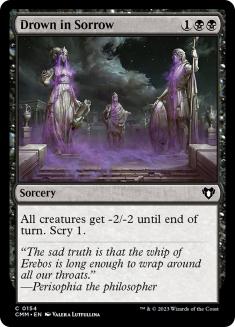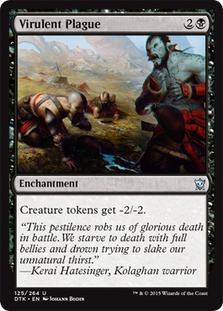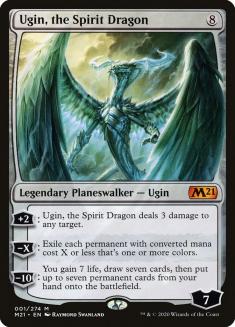I’ve been playing a lot of Esper Dragons lately, and you’ve probably been playing with it or against it. Some say it’s the best deck, and at the moment,
it’s pretty difficult to disagree. The results from #SCGPROV weren’t exactly the same as the results from Grand Prix Krakow, but I would expect the real
snapshot of the format will eventually look like a cross between the two.
Esper Dragons is a weird deck. All the decks I build beat it fairly handily, but that’s only because I’m really trying. Meanwhile, Esper Dragons is
basically the only deck I win with consistently. It’s awkward and kinda slow and kinda clunky, and yeah, I think it’s probably the best deck.
Like I said, it’s weird.
What Is This Deck Like?
If you ever played a control deck based on Mystical Teachings in Block or Standard, you will feel right at home. You aim to use your mana every turn to
deal with your opponent’s threats and see a bunch of new cards each turn, hoping to find the answers you need. You don’t have access to a big card drawer
like Sphinx’s Revelation, so you’re often stuck playing catch up.
With Mystical Teachings, you would often use it to find an answer, then flash it back, finding another Mystical Teachings to start the chain over. Dig
Through Time often picks up an answer and another copy of Dig Through Time, so the play patterns are remarkably similar.
You’re often playing the game just short one answer to get back to parity. Thankfully, between Dig Through Time and Anticipate, you often see several cards
per turn once you hit the midgame. Most games will see you clawing your way back from the brink of death, barely hanging on because of your cheap
interaction, which allows you to play multiple spells per turn, or because of Foul-Tongue Invocation removing their creature and gaining you some valuable
life back.
Then there’s the Dragonlord Ojutai easy mode.
The Dragonlord Ojutai Sub-Game
When you resolve Dragonlord Ojutai and aren’t already in immediate danger, you are no longer playing Magic. Instead, they’re hard-locked into keeping mana
open for removal, but that is easily beatable once you find a counterspell, discard spell, or another Dragonlord Ojutai. You’re no longer playing real
Magic, because the things that used to matter change dramatically once Dragonlord Ojutai is in play.
Basically, Dragonlord Ojutai creates a huge tempo advantage for you by creating a tempo black hole for them. If you connect with it once, that’s usually
enough to run away with the game because of how quickly the effect snowballs. Your Ojutai finds Anticipate, which finds Dig Through Time, which finds a
Silumgar’s Scorn and a Foul-Tongue Invocation, which eventually ends poorly for your opponent.
Overall, the sub-game is heavily in your favor and is one of the biggest reasons to play the deck in the first place. If you connect with Dragonlord
Ojutai, the game is often over.
On Icefall Regent
I can imagine a world in which Icefall Regent is a better choice than Dragonlord Ojutai, but I don’t think that time is now. In a deck like Temur or
Jeskai, you might be able to capitalize on your opponent not being able to remove Icefall Regent without spending their entire turn.
With Esper (or U/B in Shouta’s case), you aren’t presenting a lot of targets for their removal, so your Icefall Regent will almost certainly die. At that
point, you’ve traded mana with your opponent and both drawn a card, but the game has remained relatively unchanged.
The effect Dragonlord Ojutai has on the game cannot be understated, and it’s one of the few cards in the format you can say is worth splashing into a
two-color deck all on its own. It is just that good, and Icefall Regent is not. It’s certainly a good card, but in order for Icefall Regent to be good
enough, the format probably has to be faster in order for the immediate impact on the board to matter more than the power of Dragonlord Ojutai.
Your Typical Anti-Control Measures Are No Good Here
Players will often try to beat control decks with cards like Mastery of the Unseen, Outpost Siege, and planeswalkers. Those cards are laughable here. For
the most part, slamming a Dragonlord Ojutai is going to allow you to beat each of those cards rather easily, and old school U/B Control decks didn’t really
have that option. Sometimes they drew their Pearl Lake Ancient and gave you the beatdowns, sometimes a Taisgur, the Golden Fang came out of the sideboard
to do the same thing, and sometimes Ugin, the Spirit Dragon can clean up some of the mess.
Other than that, U/B Control often had a very difficult time dealing with each of those cards. They were always banking on owning the lategame and running
the opponent out of gas, but that doesn’t work against those cards. Having some big Dragons changes all that, mostly because those cards are too slow to
create a real advantage. Dragonlord Ojutai works much faster.
Which Silumgar Should I Use?
Personally, I favor the Dragonlord. The Drifting Death is harder to kill, but it’s also a much weaker card overall. I’ve heard some stories about Silumgar,
the Drifting Death teaming up with Dragonlord Ojutai to take out a horde of manifests created by Mastery of the Unseen or Whisperwood Elemental, but most
of the time, Dragonlord Silumgar would have been just as good.
I’ve been beaten to death by my own Xenagos, the Reveler enough times to recognize that Dragonlord Silumgar is the truth. It may not happen overnight, but
I fully expect people to make that swap eventually.
The Master Of Waves Package
In regular ole U/B Control, the four Encase in Ice / four Master of Waves package is actually pretty good. That deck can’t afford to play a long, drawn out
game against Mono-Red Aggro because eventually they’ll get burned out. They need a win condition that closes the door quickly, and Master of Waves is a
great one.
However, in Esper Dragons, you are not interested. Not only is Master of Waves not necessary, but Encase in Ice works very poorly with one of your best
cards against Mono-Red Aggro: Foul-Tongue Invocation. I tried the package for one tournament and decided it wasn’t worth it. Perhaps if the matchup was
highly unfavorable with the normal configuration, it would be worth running, but that isn’t the case.
The Decklist
Creatures (5)
Lands (27)
Spells (28)

My decklist isn’t that much different from anyone else’s, but I think it’s better overall.
Ugin, the Spirit Dragon is not great against the majority of decks out there, so I think it belongs in the sideboard. With Haven of the Spirit Dragon, the
deck is rarely hurting for win conditions anyway.
I respect Mono-Red Aggro, so I have an extra Bile Blight and Foul-Tongue Invocation, but those slights are customizable. Dragonlord Silumgar picks up some
of the slack of losing a Hero’s Downfall. Plus, I think it’s pretty dangerous to be playing planeswalkers with Dragonlord Silumgar around anyway.
The extra Thoughtseize is basically because I wanted another cheap way to interact. Having an extra card that matters in the mirror is pretty important
right now. I’ve also cut the Flooded Strand out of respect for the mirror. It’s a minor change, and it’s one that makes your Dig Through Times slightly
worse, but decking is a real issue Game 1 in the mirror, but maybe that’s not a big enough concern to outweigh the advantages of having an extra fetchland.
Tasigur, the Golden Fang is no longer in the sideboard as a catchall. Instead, I have Duress, which is far more effective in the mirror and against
Mono-Red Aggro. I haven’t missed the extra threat yet.
The Major Matchups
Esper Dragons
Ah, yes, the mirror match. This is an odd one because you only have so many cards that matter, each of them trade on a one-for-one basis, and unless
something horrible goes wrong, one person will probably end up getting decked in Game 1. I put that plan into action in my video earlier this week, and it would have worked
beautifully had I not completely blown it twice. Unless your opponent has something like Pearl Lake Ancient or Ashiok, Nightmare Weaver maindeck just to
hate on the mirror matches, you should be able to deck them.
You could maindeck something like a Dragonlord’s Prerogative, but it doesn’t actually make the mirror more favorable in Game 1. You can draw some extra
cards, but that just makes their job a lot easier. However, in the sideboard games, you have access to more threats and more disruption, and Dragonlord’s
Prerogative becomes your best card.
You’ll often want to hold off on casting a discard spell early because it’s unlikely that you’ll get into a fight early on. If you think they have a
Dragonlord’s Prerogative, you’ll definitely want to take theirs. Other than that, you basically want to resolve a bunch of card drawing and then cast a
string of discard spells that leaves them relatively helpless against your full grip.
Out:
In:
Red Aggro
This is supposedly the bad matchup, but I don’t really see it. They will basically do the same thing every game, so the onus is on you to produce a quality
draw, but that’s easy enough. Foul-Tongue Invocation is basically your best card here since it trades with a creature and counters a Stoke the Flames.
Sometimes you might hit “only” a Goblin, but that’s still a fine trade. If you’ve cleared out their Goblins with a Bile Blight or Drown in Sorrow,
Foul-Tongue Invocation becomes even better.
You will basically need to draw Bile Blight, Drown in Sorrow, or Virulent Plague to keep up with their initial rush, but there are some games where you’re
able to discard or counter their token makers. Once you remove their ability to go wide, you should have a much easier time dealing with their dinky
creatures.
Out:
In:
I could see shaving a Dragonlord Silumgar since it’s not the fastest clock, and stealing one of their creatures isn’t likely going to make a dramatic
difference in the game. However, it is a Dragon, and you really want a Dragon to reveal for Foul-Tongue Invocation and, to a lesser extent, Silumgar’s
Scorn.
Abzan Control
Now that not all Abzan Control decks are being built the same way, you need to pay attention to specifics about their list in order to sideboard
effectively. If you expect them to bring in Fleecemane Lions, feel free to keep some Bile Blights handy. If you get blindsided by them Game 2, that’s still
alright because Foul-Tongue Invocation does a lot of good work against them.
I like Thoughtseize because it trades one-for-one cheaply and, even once you’re firmly in the midgame, they will still likely have spells in their hand.
It’s incredibly rare for a Thoughtseize to go completely dead and for that to affect the outcome of the game. At that point, either they’re far ahead or
you are, and very few cards can swing the pendulum in the opposite direction, so it’s not like you’re missing much.
At first, the matchup might seem grindy, and while that’s true, you still don’t have a bunch of time to be messing around with Dragonlord’s Prerogative.
Adding an additional card drawer is actively good, but you don’t want to be bogged down by too many of them. Ugin, the Spirit Dragon is a nice catchall and
is typically more important to have access to than another card drawer.
Out:
In:
Abzan Aggro
This matchup can be difficult. They have disruption, good removal, resilient creatures, and they get under you rather easily. Despite that, I’ve been
winning more than losing, mostly because of the Dragonlord Ojutai sub-game and how ill-equipped they are to win it. Their removal is great, but it is
expensive, and that definitely works in your favor.
Still, I could sideboard some more cards specifically for this matchup in order to shore it up a bit.
Out (on the play):
In (on the play):
Out (on the draw):
In (on the draw):
Everything Else
Yep, I sure side out Crux of Fate in a lot of places, but that doesn’t mean it shouldn’t be in the maindeck. In fact, some of the most difficult matchups
are midrange green decks where Crux of Fate can really shine. There are far more matchups out there than just these four, and it’s important to hedge
against the entire field instead of just the winner’s metagame.
If Mono-Red Aggro is a large factor, I could see trading a Crux of Fate for a Drown in Sorrow, which is actually a reasonable maindeck card right now.
Overall, the entire removal suite is highly customizable, so you should play whatever suits your needs.
***
Remember to tune in next Tuesday to twitch.tv/magic for Standard Super League! My Round 1 pairing is against Josh Utter-Leyton, who will almost certainly
be playing Esper Dragons, which he took to an 11th place finish at Pro Tour Dragons of Tarkir. As for me, I will definitely not be playing Esper Dragons.
If I were playing in the Open Series in Cleveland this weekend, it’s definitely what I’d play, but I have a feeling Standard Super League is going to be
pretty hateful toward that sort of thing.
I’m not 100% sure what I’m playing quite yet, but I’ve got a few ideas. It should be interesting.

